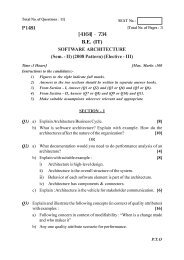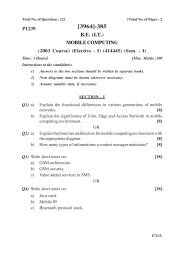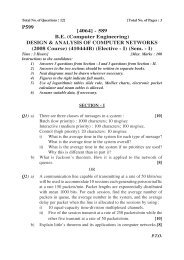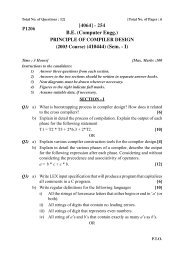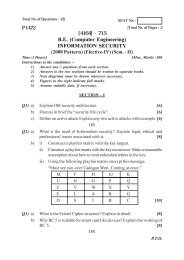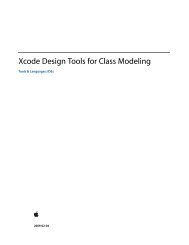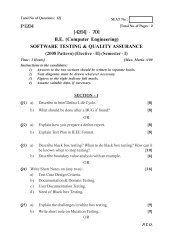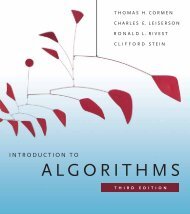Cloud Computing and SOA Convergence in Your Enterprise: A Step ...
Cloud Computing and SOA Convergence in Your Enterprise: A Step ...
Cloud Computing and SOA Convergence in Your Enterprise: A Step ...
You also want an ePaper? Increase the reach of your titles
YUMPU automatically turns print PDFs into web optimized ePapers that Google loves.
72 Chapter 4 Mak<strong>in</strong>g the Bus<strong>in</strong>ess Case for <strong>Cloud</strong>s<br />
comput<strong>in</strong>g provider could suddenly discont<strong>in</strong>ue service. There are cost/benefit<br />
trade-offs to be consider here, so make sure you dial both the upside <strong>and</strong> the<br />
downside risks <strong>in</strong>to your bus<strong>in</strong>ess case.<br />
Agility <strong>and</strong> Reuse<br />
Agility <strong>and</strong> reuse are part of the value of cloud comput<strong>in</strong>g, <strong>and</strong> each has its<br />
own benefit to enterprise architecture. First is the ability to save development<br />
dollars through reuse of services <strong>and</strong> applications. (We talk about services <strong>in</strong><br />
Chapter 6, “Work<strong>in</strong>g from <strong>Your</strong> Services to the <strong>Cloud</strong>s.” For now, it is helpful<br />
to note that many services make up an application <strong>in</strong>stance.) These services<br />
may have been built <strong>in</strong>side or outside of the company, <strong>and</strong> the more services<br />
that are reusable from system to system, the more ROI is realized from our<br />
<strong>SOA</strong> us<strong>in</strong>g cloud comput<strong>in</strong>g.<br />
Second is the ability to change the IT <strong>in</strong>frastructure faster to adapt to the<br />
chang<strong>in</strong>g needs of the bus<strong>in</strong>ess, such as market downturns, or the <strong>in</strong>troduction<br />
of a key product to capture a chang<strong>in</strong>g market. This, of course, provides<br />
a strategic advantage <strong>and</strong> gives the bus<strong>in</strong>ess a better chance of long-term survival.<br />
Many enterprises are plagued these days with hav<strong>in</strong>g IT <strong>in</strong>frastructures<br />
that are so poorly planned <strong>and</strong> fragile that they hurt the bus<strong>in</strong>ess by not provid<strong>in</strong>g<br />
the required degree of agility.<br />
Under the concept of reuse are a few th<strong>in</strong>gs we must determ<strong>in</strong>e to better<br />
def<strong>in</strong>e the value:<br />
The number of services that are reusable<br />
Complexity of the services<br />
The degree of reuse from system to system<br />
The number of reusable services is the actual number of new services<br />
created, or exist<strong>in</strong>g services abstracted, that are potentially reusable from system<br />
to system. The complexity of the services is the number of functions or<br />
object po<strong>in</strong>ts that make up the service. We use traditional functions or object<br />
po<strong>in</strong>ts as a common means of express<strong>in</strong>g complexity <strong>in</strong> terms of the types of<br />
behaviors the service offers. F<strong>in</strong>ally, the degree of reuse from system to system<br />
is the number of times you actually reuse the services. We look at this<br />
number as a percentage.<br />
Just because we abstract exist<strong>in</strong>g systems as services or create services<br />
from scratch, that does not mean that they have value until they are reused<br />
by another system. In order to determ<strong>in</strong>e their value, we must first determ<strong>in</strong>e



